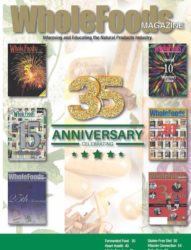The scientific community is still debating whether the benefits of using nanoparticles outweigh any potential risks, and now there is another voice to add to the mix.
A large group of researchers from several institutions (including the Research Institute, University of California, Iowa State University, Konkuk University in South Korea and the U.S. Department of Agriculture) published a study in Proceedings of the National Academy of Sciences that indicates nanoparticles may give us some cause for concern.
The group contends that manufactured nanomaterial (MNM) buildup “could profoundly alter soil-based food crop quality.” This conclusion is based off the researchers’ new study that used nano-particle contaminated soil to grow soybeans. The soil contained zinc oxide and cerium oxide nanoparticles (nano–ZnO and -CeO2), and the group found that the soybean plants readily took up these metals from the soil.
The nano-ZnO spread to the plant tissue that is consumed, while the nano-CeO2 caused the plants to grow smaller and more slowly, with diminished yields. Plus, nitrogen fixation in which nitrogen is reduced to form ammonia (called a “major ecosystem service of leguminous crops”) did not occur at all with the highest concentrations of nano-CeO2. Says the research team, “These results indicate broader risks to the food supply, but also to the environment, as increased synthetic fertilizer use would be required to offset lost nitrogen fixation.”
Nano-ZnO is used in sunscreen and cosmetics, while nano-CeO2 is used as a catalytic converter for numerous applications. Both nanoparticles could realistically end up in soil from manufacturing run-off or simply from being washed down the drain at home.
Published in WholeFoods Magazine, October 2012 (online 8/22/12)










